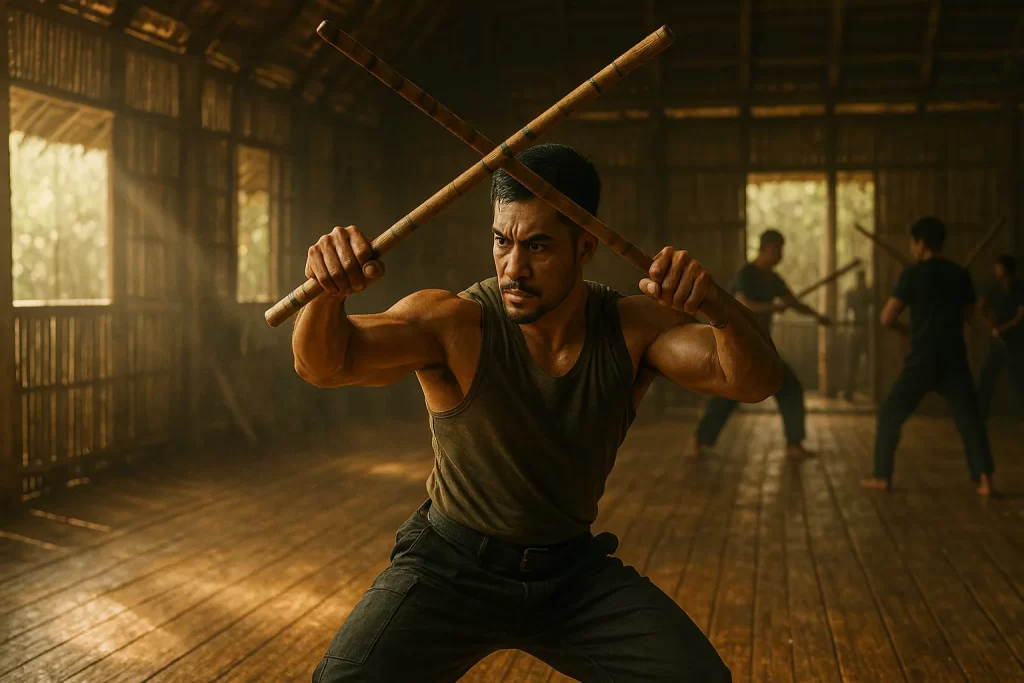Pekiti-Tirsia

Pekiti-Tirsia Kali is a traditional Filipino martial art system focused on edged weapons and close-quarters combat, founded by the Tortal family in the Philippines. Known for its aggressive offense, blade-centric tactics, and tactical mindset, it is widely respected among military, law enforcement, and martial artists around the world. The system emphasizes mobility, counter-offense, and timing, using real-world combat principles and footwork-intensive drills. Pekiti-Tirsia is practiced both as a cultural heritage and a modern combat method, often through structured modules and live sparring. It remains one of the most combat-tested and systematically developed Kali systems today.
Pekiti-Tirsia Essentials
About Pekiti-Tirsia
Explore the core of Pekiti-Tirsia Kali—its structure, weapon focus, and strategic doctrine. This section introduces the art’s emphasis on survival-based training, tactical mobility, and blade proficiency.
Pekiti-Tirsia History
Discover the origins of Pekiti-Tirsia within the Tortal family and its evolution from a provincial blade art into a global tactical system. Learn how Grand Tuhon Leo T. Gaje Jr. expanded and refined the style internationally.
Philosophy & Approach
Pekiti-Tirsia teaches that the best defense is a superior offense. This section explores its combat-driven philosophy based on destruction, control, and dominance through angles, timing, and dynamic entry.
Techniques & Style
Delve into Pekiti-Tirsia’s signature techniques: from diagonal attacks and circular defenses to thrusting patterns, live blade tactics, and combat geometry. Includes drills like Seguidas, Contradas, and Recontras.
Traditions & Etiquette
Understand the warrior ethos and traditional values of respect, loyalty, and lineage embedded in Pekiti-Tirsia practice. Includes ritual greetings, instructor protocols, and cultural elements preserved through training.
Uniform & Symbols
Explore the attire worn by Pekiti-Tirsia practitioners—from tactical gear used in combatives training to patches, emblems, and ranks that reflect the warrior identity and organizational affiliations.
Weapons
Dive into Pekiti-Tirsia’s arsenal: single/double sticks, blades (bolo, dagger), empty-hand extensions, and flexible weapons. Learn how each is taught progressively and applied tactically in combat environments.
Ranking System
Pekiti-Tirsia uses a structured progression system based on modules (like Doce Methodos, Tri-V Formula). This section breaks down levels of mastery, instructor titles, and certification pathways.
Pekiti-Tirsia Glossary
A focused glossary of essential Pekiti-Tirsia terms—from weapon classifications to strategic movement concepts. Ideal for deepening your understanding of drills, flows, and terminology.
Notable Figures
Meet the key figures in Pekiti-Tirsia history—from founder Conrado Tortal to Grand Tuhon Leo T. Gaje Jr., and the master instructors spreading the system across military and civilian sectors.
Branches & Organizations
Learn about major Pekiti-Tirsia groups such as PTTA, Pekiti Tirsia Global Organization, and various regional schools. Explore how each branch maintains the system’s tactical integrity and teaching structure.
Competitive Format
Though Pekiti-Tirsia is not a sport, certain branches offer controlled sparring and blade simulation drills. This section explains how realism is balanced with safety in pressure-testing environments.

